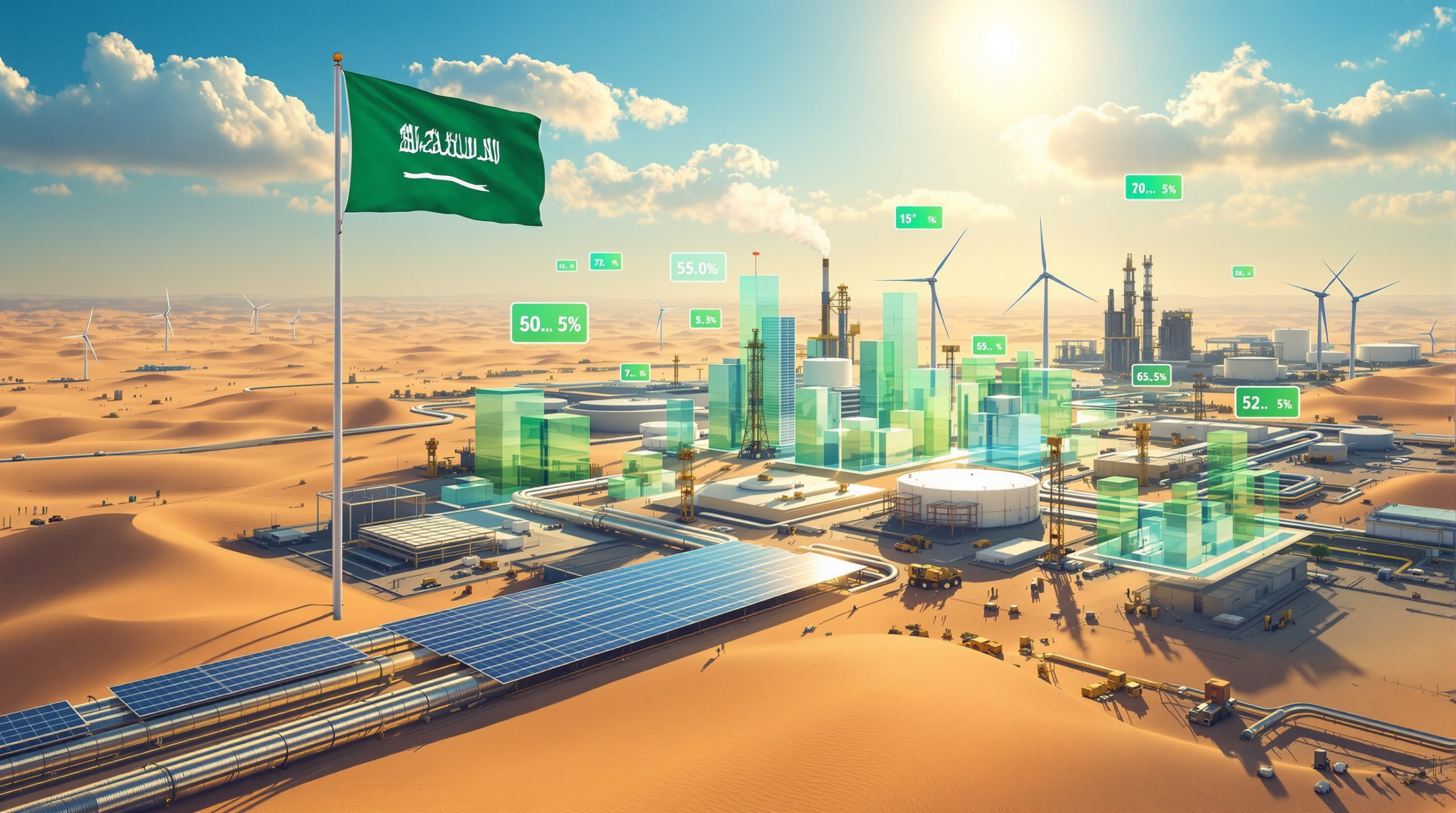Why is Water Management Critical for Mining's Future?
As the mining industry confronts increasing pressure to secure critical minerals while reducing environmental impact, water management has emerged as perhaps the most pressing challenge. Mining operations require enormous volumes of water for ore processing, dust suppression, and waste management—often in water-scarce regions where competition for this precious resource is intense.
The industry's historically low investment in research and development has created a significant innovation gap, particularly in sustainable water practices. According to industry data, the five largest mining companies spent just 0.4% of revenue on R&D in 2018, far below other resource-intensive sectors. This challenge comes at a critical juncture as the United States aims to fast-track permits for approximately 20 new domestic mines to achieve critical mineral independence.
The Water-Mining Nexus: Understanding the Challenge
Water in mining isn't merely consumed—it faces contamination risks through acid mine drainage and heavy metal pollution that can affect nearby groundwater and surface water systems. Acid mine drainage occurs when sulfide minerals oxidize upon exposure to air and water, generating sulfuric acid that mobilizes heavy metals into water systems, creating long-term environmental challenges.
With easier-to-access minerals largely extracted, mining companies must now venture deeper and process more material to obtain the same yield. This trend further increases water demands and waste management solutions, creating a vicious cycle of resource intensity.
"The deeper we go for minerals, the more water-intensive operations become. Each additional meter of depth typically increases water requirements by 2-5% due to greater processing needs and dust suppression requirements." — Mining Sustainability Quarterly
Current State of Water Usage in Mining Operations
Mining's relationship with water is multifaceted and complex:
- Extraction processes require substantial volumes—large copper mines can consume 30,000-150,000 cubic meters daily, while gold mines may require 10,000-50,000 cubic meters per day
- Water quality impacts extend beyond the mine site to surrounding ecosystems, potentially affecting biodiversity and ecosystem services
- Community concerns about groundwater contamination consistently rank as the primary opposition point for new projects
- Operational challenges intensify in water-scarce regions, where climate change is exacerbating availability issues
- Regulatory compliance requirements vary widely across jurisdictions, creating inconsistent standards
The economic reality is stark: water-related disruptions cost the mining industry an estimated $20 billion annually in lost production, regulatory penalties, and community conflicts.
What Innovations Are Transforming Mining Water Management?
The quest for sustainable mining has accelerated technological innovation across three key areas: reducing dependence on water, maximizing water recycling, and implementing advanced monitoring solutions.
Dry and Near-Dry Processing Technologies
Revolutionary approaches to minimize or eliminate water usage in ore processing include:
- Dry magnetic separation techniques that use magnetic forces to separate minerals without water, reducing consumption by up to 60%
- Air classification systems that sort particles based on density and size using only air currents
- Waterless flotation methods utilizing ozonation or electrostatic separation to replace traditional reagent-water mixtures
- Mechanical crushing and grinding optimizations that reduce the need for water-based dust suppression
- Alternative dust suppression technologies using biodegradable polymers or electrostatically charged mist
One notable innovation comes from Australian mining technology company ResoDry, whose vibratory dry separation system has demonstrated 80% water reduction in pilot projects while maintaining 95% mineral recovery rates.
Advanced Water Recycling Systems
Modern water recycling innovations in mining operations have transformed how the industry manages this precious resource:
- Closed-loop water circuits capture and reuse over 90% of process water, dramatically reducing freshwater withdrawal requirements
- Advanced filtration and purification technologies including nanofiltration and biological treatment systems remove contaminants to near-drinking water standards
- Real-time monitoring systems track water quality parameters continuously, allowing immediate intervention when issues arise
- Membrane technologies achieve over 99% contaminant removal through reverse osmosis and ultrafiltration processes
- Evaporation reduction strategies for tailings facilities, including floating covers and chemical suppressants
"The implementation of our membrane bioreactor system at the Cerro Verde mine reduced freshwater requirements by 65% while improving discharge water quality beyond regulatory requirements." — Water Technology Engineer, Freeport-McMoRan
Real-Time Monitoring and AI-Driven Solutions
Digital technologies are revolutionizing water management in mining through:
- IoT sensor networks deployed throughout water systems provide continuous assessment of water quality, quantity, and movement
- AI-powered predictive analytics optimize water usage by forecasting needs and identifying potential issues before they become problems
- Automated systems adjust water consumption based on real-time processing requirements, weather conditions, and water availability
- Digital twins of water systems simulate and optimize performance across various operating scenarios
- Remote monitoring capabilities enable centralized oversight of distributed water infrastructure, reducing response times to potential issues
These technologies aren't just theoretical—Chilean copper mines implementing AI-driven monitoring systems have documented 40% reductions in freshwater withdrawal while maintaining production levels.
How Can Mining Reduce Its Waste Footprint?
The mining industry's waste challenge is staggering: for every tonne of rare earth elements extracted, miners can leave behind hundreds of tonnes of tailings. Reducing this waste footprint is critical for environmental protection and operational efficiency.
Precision Mining Technologies
Next-generation mining approaches that minimize waste through surgical extraction include:
- Selective extraction methods that target only valuable minerals, leaving non-mineralized material in place
- Advanced drilling technologies with reduced environmental impact, including directional drilling to access ore bodies with minimal surface disturbance
- In-situ recovery methods that dissolve target minerals underground and pump the solution to the surface, leaving minimal surface disturbance
- Robotic mining systems capable of precise ore extraction in confined or dangerous spaces
- Ore body mapping technologies that improve targeting accuracy through 3D visualization and geophysical analysis
The precision mining approach has demonstrated remarkable results. Rio Tinto's autonomous drilling operations in Australia's Pilbara region reduced waste rock movement by 20% through more accurate targeting, saving water and energy while improving recovery rates.
Smart Ore-Sorting Innovations
Technological advances in ore sorting are transforming waste reduction through:
| Technology | Principle | Waste Reduction Potential |
|---|---|---|
| X-ray Transmission (XRT) | Detects atomic density differences | 30-50% |
| Optical Sorting | Identifies color/reflectance variations | 20-40% |
| Electromagnetic Sensors | Measures conductivity differences | 25-45% |
| Laser-Induced Breakdown Spectroscopy | Analyzes elemental composition | 35-55% |
| Hyperspectral Imaging | Detects mineral-specific spectral signatures | 40-60% |
These systems can process up to 300 tonnes per hour with 95% accuracy, dramatically reducing the volume of material requiring water-intensive processing. Early adopters report 30-40% reductions in water usage per tonne of final product.
Additional innovations include:
- AI-powered systems that identify valuable minerals with greater precision using machine learning algorithms trained on thousands of samples
- Pre-concentration methods that reduce processing volumes before water-intensive stages
- Real-time grade control systems that adjust processing parameters based on ore characteristics
- Automated waste separation technologies that continuously optimize the ore/waste boundary
Can Mining Waste Become a Resource?
The mining industry is increasingly recognizing that yesterday's waste could be tomorrow's treasure. With advanced technologies and changing economics, materials once discarded as worthless are being reconsidered as valuable resources.
Extracting Value from Tailings and Low-Grade Ore
Innovative companies are finding new approaches to mine waste valorization:
- Microbial extraction technologies recover minerals from tailings using bacteria that naturally solubilize metals, achieving 70-85% recovery rates from previously discarded materials
- Advanced leaching processes for low-grade materials utilize selective chemical formulations to target specific minerals
- Reprocessing of historical mine waste using modern technologies recovers 15-30% residual minerals missed by earlier, less efficient methods
- Conversion of tailings into construction materials like cement additives, bricks, and aggregates creates circular economy opportunities
- Recovery of rare earth elements from previously discarded materials supports critical mineral supply chains
Bioleaching techniques using specialized bacteria like Acidithiobacillus ferrooxidans operate at pH levels of 1.5-2.5, enabling metal dissolution from sulfide minerals without traditional chemical inputs. These processes can recover copper, gold, zinc, and other valuable metals from waste with significantly reduced environmental impact.
Case Studies in Waste-to-Resource Conversion
Endolith Mining's Microbial Approach
This innovative startup combines microbial processes with AI to extract critical minerals from low-grade ore and mining waste, demonstrating how biotechnology can transform previously uneconomical resources into valuable assets. Their proprietary consortium of metal-mobilizing microorganisms has achieved gold recovery rates exceeding 80% from tailings containing less than 0.5 g/ton—material previously considered uneconomic.
Endolith's approach requires 60% less water and 70% less energy than conventional processing while eliminating the need for harsh chemicals like cyanide in gold extraction. The company's pilot project in Nevada has successfully processed 10,000 tonnes of legacy tailings, recovering both gold and silver while remediating the site.
Maverick Metals' Slag Processing
By developing methods to convert low-grade ore and smelter slag into high-value feedstock, Maverick Metals exemplifies how mine reclamation innovation can create new value streams from materials previously considered waste. Their electrochemical refinement process extracts battery-grade cobalt (99.5% purity) and nickel from slag piles that have accumulated at smelting operations for decades.
The process not only recovers valuable metals but also renders the remaining material environmentally benign, addressing legacy pollution issues. Maverick's operations in Michigan's Upper Peninsula are currently processing 500 tonnes of slag monthly, producing enough refined cobalt to supply battery manufacturing for 10,000 electric vehicles annually.
What Barriers Exist to Water Innovation in Mining?
Despite the clear environmental and economic benefits of innovation in water management for mining, significant barriers impede widespread adoption. Understanding these obstacles is crucial for accelerating the transition to more sustainable practices.
Regulatory and Policy Challenges
Several factors impact the adoption of water innovations:
- Inconsistent regulatory frameworks across jurisdictions create compliance complexity for multinational operations
- Permitting processes often incentivize proven technologies over innovative solutions due to risk aversion among regulators
- Legacy regulations designed for conventional technologies may inadvertently penalize novel approaches
- Lack of standardized metrics for water efficiency makes benchmarking and improvement tracking difficult
- Varying enforcement of environmental protection standards creates uneven competitive landscapes
In Arizona, a copper mine's implementation of AI-driven water monitoring was delayed by 18 months due to regulatory uncertainty about how to permit the new technology. This example highlights how approval processes designed for conventional approaches can impede innovation.
Economic and Investment Hurdles
Financial considerations affecting innovation include:
- High capital costs for implementing new technologies—65% of miners cite this as their primary adoption barrier
- Uncertain return on investment for sustainability initiatives, particularly when water is underpriced relative to its true value
- Industry's traditionally low R&D spending (0.4% of revenue) compared to other sectors (automotive: 3-5%, pharmaceuticals: 15-20%)
- Risk aversion in adopting unproven technologies, especially at large-scale operations
- Short-term financial pressures from shareholders versus long-term sustainability benefits
"Mining companies face a 'valley of death' when transitioning water technologies from successful pilots to full-scale implementation. The risk premium investors demand for first-of-kind deployments often makes financing prohibitively expensive." — Mining Innovation Economist
The economics are further complicated by ore grade variability—as grades decline, water intensity typically increases, creating a moving target for efficiency investments.
How Can Community Concerns Be Addressed?
Public opposition has become one of the most significant barriers to new mining projects, with water impacts consistently ranking as the primary community concern. Recent years have seen numerous mining projects stalled or canceled due to community resistance.
Overcoming Public Opposition to Mining Projects
The track record shows clear patterns:
- Two copper-nickel mines in Minnesota faced years of legal challenges centered on potential groundwater contamination
- A copper mine in Arizona was blocked after tribes and conservation groups raised concerns about impacts to sacred waters
- Uranium mines in New Mexico encountered resistance due to historical contamination of aquifers used by indigenous communities
- A copper mine in Michigan's Upper Peninsula faced opposition over potential impacts to Lake Superior watershed
According to community surveys, groundwater contamination consistently ranks as the top concern, cited by 89% of stakeholders in opposition movements. Surface water impacts and long-term water availability follow closely behind.
Building Trust Through Transparent Water Management
Strategies for improving community relations include:
- Public access to water quality monitoring data through user-friendly dashboards and regular reporting
- Community involvement in environmental oversight through citizen advisory boards and participatory monitoring programs
- Clear communication about water protection measures using accessible language and visual aids
- Benefit-sharing agreements that address water concerns through infrastructure improvements or watershed protection
- Independent third-party verification of water management practices using blockchain or other tamper-proof systems
Mining companies that have successfully implemented these approaches report 40-60% reductions in project delays and a 30% improvement in community acceptance metrics. The economic value of this social license can be quantified—studies indicate that community conflicts can cost major mining projects $20 million per week in delayed production.
"When we implemented our community watershed monitoring program, allowing local residents to independently verify our water quality data, opposition to our expansion dropped by 65% within six months." — Community Relations Director, North American Mining Company
What Is the Global Context for Critical Mineral Independence?
The quest for sustainable mining practices occurs against a backdrop of intense geopolitical competition for critical mineral resources essential to clean energy technologies, defense systems, and digital infrastructure.
China's Dominance in Critical Minerals
After three decades of strategic investment, China now controls more than 85% of rare earth element processing globally. This dominance extends across the value chain:
- Mining operations across multiple continents
- Processing facilities that convert raw materials into usable forms
- Manufacturing capacity for components requiring these materials
- Research expertise in material science and metallurgy
- Strategic reserves of key materials
This concentration creates supply chain vulnerabilities for countries dependent on these materials for clean energy technologies and defense applications. The United States, European Union, and Japan have all identified this dependency as a national security concern.
International Initiatives for Mineral Security
In response to these challenges, the US has launched the Mineral Security Partnership (MSP), an international initiative supporting private investment in critical mineral projects across Africa, Latin America, and Canada. This represents a shift toward collaborative approaches to secure sustainable supply chains.
The MSP supports 17 projects across three continents, focusing on:
- Lithium extraction in Canada, Argentina, and Chile
- Cobalt mining in Democratic Republic of Congo and Zambia
- Rare earth element processing in Australia and Vietnam
- Graphite production in Mozambique and Madagascar
- Nickel recovery in Indonesia and Brazil
These projects incorporate stringent water management requirements, recognizing that environmental sustainability is essential for long-term mineral security. Projects receiving MSP support must demonstrate water efficiency metrics 30% better than industry averages and implement community water protection measures.
How Are Accelerators Driving Mining Innovation?
Innovation ecosystems are emerging to bridge the gap between mining's challenges and technological solutions, with accelerators playing a pivotal role in nurturing startups focused on sustainable mining practices.
The Role of Public-Private Partnerships
Organizations like Current and Nomadic Venture Partners have launched federally funded accelerators to support startups developing clean mining technologies. These programs connect innovators with mining companies willing to pilot new solutions that reduce waste, minimize water usage, and protect communities and the environment.
The accelerator model provides critical support through:
- Technical validation of innovative approaches
- Access to testing facilities at operating mines
- Connections to industry decision-makers
- Regulatory navigation assistance
- Early-stage funding to bridge the "valley of death"
Current's mining technology accelerator supports 12+ startups annually, focusing specifically on water management innovations. Their portfolio companies have collectively raised over $45 million in follow-on funding and implemented technologies at 28 mine sites globally.
Measuring Success in Mining Innovation
Key performance indicators for mining innovation programs include:
- Reduction in water consumption per ton of ore processed (targeting 30-50% improvements)
- Decrease in waste generation through more efficient extraction and processing
- Improved water quality in surrounding ecosystems, measured against baseline conditions
- Community acceptance of mining operations, tracked through sentiment analysis and stakeholder surveys
- Economic benefits from resource recovery from waste, creating new revenue streams
Success stories include Nomadic Venture Partners' accelerator cohort testing AI-enhanced flotation technology at Freeport-McMoRan sites, achieving 28
Ready to Stay Ahead of the Next Major Mineral Discovery?
Receive instant alerts on significant ASX mineral discoveries with Discovery Alert's proprietary Discovery IQ model, transforming complex data into actionable investment insights. Explore why historic discoveries can generate substantial returns by visiting the Discovery Alert discoveries page and start your 30-day free trial today to position yourself ahead of the market.




